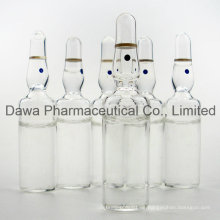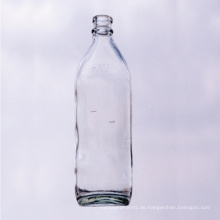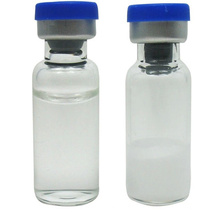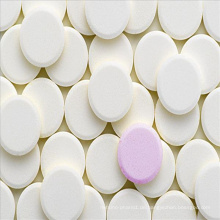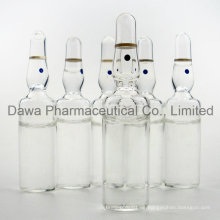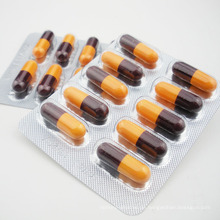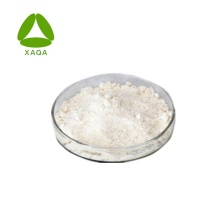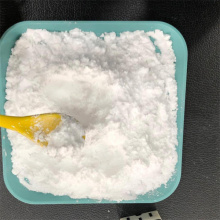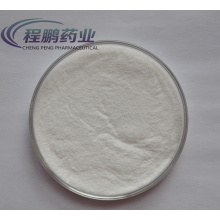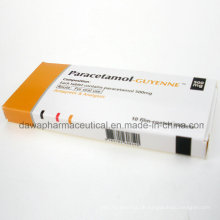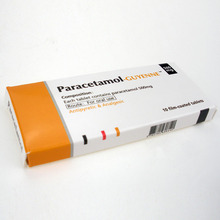| 1 Chemical properties | Chemical properties
Benzocaine is the ethyl ester of p-aminobenzoic acid (PABA). It can be prepared from PABA and ethanol by Fischer esterification or via the reduction of ethyl p-nitrobenzoate. Benzocaine is sparingly soluble in water; it is more soluble in dilute acids and very soluble in ethanol, chloroform . The melting point of benzocaine is 88-90 °C, and the boiling point is about 310 °C. The density of benzocaine is 1.17 g/cm3. | | 2 History | History
Benzocaine was first synthesized in 1890 by the German chemist Eduard Ritsert (1859-1946), in the town of Eberbach and introduced to the market in 1902 under the name "Anästhesin". | | 3 Mechanism of action | Mechanism of action
Pain is caused by the stimulation of free nerve endings. When the nerve endings are stimulated, sodium enters the neuron, causing depolarization of the nerve and subsequent initiation of an action potential. The action potential is propagated down the nerve toward the central nervous system, which interprets this as pain. Benzocaine acts to inhibit the voltage-dependent sodium channels (VDSCs) on the neuron membrane, stopping the propagation of the action potential. | | 4 Uses | Benzocaine is indicated to treat a variety of pain-related conditions. It may be used for:
Local anesthesia of oral and pharyngeal mucous membranes (sore throat, cold sores, mouth ulcers, toothache, sore gums, denture irritation)
Otic Pain (earache)
Surgical or procedural local anesthesia | | 5 Formulations | Benzocaine can come in a variety of preparations including:
Oral preparations:
Lozenges (ex. Cepacol, Mycinettes)
Topical preparations:
Aerosol (ex. Topex)
Gel (ex. Orajel)
Paste (ex. Orabase)
Otic preparations:
Solution (ex. Allergen) | | 6 Side effects | Benzocaine is generally well-tolerated and non-toxic when applied topically as recommended.
However, there have been reports of serious, life-threatening adverse effects (e.g., seizures, coma, irregular heart beat, respiratory depression) with over-application of topical products or when applying topical products that contain high concentrations of benzocaine to the skin. | | 7 Other uses | Jiffy Toothache Drops bottle (7.75% Benzocaine)
Benzocaine is used as a key ingredient in numerous pharmaceuticals:
Some glycerol-based ear medications for use in removing excess wax as well as relieving ear conditions such as otitis media and swimmers ear.
Some previous diet products such as Ayds.
Some condoms designed to prevent premature ejaculation. Benzocaine largely inhibits sensitivity on the penis, and can allow for an erection to be maintained longer (in a continuous act) by delaying ejaculation. Conversely, an erection will also fade faster if stimulus is interrupted.
Benzocaine mucoadhesive patches have been used in reducing orthodontic pain.
In Poland it is included, together with menthol and zinc oxide, in the liquid powder (not to be confused with the liquid face powder) used mainly after mosquito stings. Today's ready made Pudroderm was once used there as pharmaceutical compound.
Benzocaine is commonly found, particularly in Britain, as an impurity in street . Whilst giving a numbing effect similar to on users' gums it does not actually produce the effects of . Also benzocaine can and has been mistaken for a false positive for . | | 8 Synthesis | Prepd by the esterification of p-aminobenzoic acid: by the reduction of ethyl p-nitrobenzoate:
Benzocaine can be prepared by esterfication using 4-aminobenzoic acid and ethanol. It can also be prepared by reduction of ethyl 4-nitrobenzoate to the amine.
In industrial practice, the reducing agent is usually iron and water in the presence of a little acid. | Dawa Pharm Co & Periode; Ltd & Periode; Produktgruppe : Antipyretisches & Analgetikum
|
